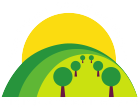Geography
We believe that geography, unlike some other subjects, is not learnt in a strictly linear way, so it is not possible to identify a simple progression in geographical content. Instead, we see geography as an inter-connected network of skills and concepts which help pupils develop their geographical thinking, identify relationships and make connections with increasing fluency in different and more complex situations.
The sequencing of geography in LMTW is planned using the triangulation of three elements:-
- the National Curriculum
- the Knowledge Building Pillars and Cognitive Blocks
- the Skills Ladder
The geographical learning within themes is designed to enable pupils to build on and contextualise prior learning using a contemporary, meaningful framework. Geography is planned for in such a way that each pupils will:-
- broaden and deepen their knowledge of places
- increase their technical geographical vocabulary
- develop their understanding of a range of scales (local > national > global)
- move from more concrete concepts e.g. beach to more abstract ones e.g. renewable energy
- see connections between people, places, processes and environments
- develop skills in a progressive, incremental way
- use these skills appropriately and, eventually, with independence
For example, why is ‘Picture our Planet’ positioned within Adventurers? In simple terms, it enables pupils to build on prior learning about the UK from Pathfinders, helps pupils make geographical connections by looking at similarities and differences between the three contrasting places, focuses on more advanced vocabulary and provides the opportunity to build on skills learnt previously and extend them further e.g. mapping, aerial view, perspective.
How do we know the National Curriculum is covered?
By using a rigorous matrix approach, the objectives of the National Curriculum are cross-referenced to the ‘Learning Means the World’ Curriculum and identified gaps are taught through NC specific geography units.
Progression
How do we plan for progression in geography?
The Skills Ladder acts as an incremental model for skills acquisition and provides a benchmark for each year group, with teachers using the skills statements as a model for progression throughout the school. Growing in complexity and demand across Key Stages 1 and 2, pupils’ learning when linked to the Skills Ladder should enable them to make good progress in geography. The Knowledge Building Pillars form a robust model of progression for knowledge and understanding, helping pupils to assimilate, synthesise and apply their learning within different geographical contexts. This also means that concepts are cumulatively built upon. For example, Processes and Changes would show children learning about deforestation in Madagascar in Pathfinders, identifying and using sources of evidence that show the changing landscape of Africa to learning about cause and effect of air and water pollution in different parts of the world in Navigators.
Assessment and Recall
Kahoot Quizzes, for the purposes of diagnostic assessment, as well as checking recall are the main vehicle for assessment and recall.
Scale
Local Geography
There are opportunities for pupils to learn about local geography at different levels, specifically in Pathfinders ‘Unity in the Community’, Adventurers ‘Out and About’ and Navigators ‘Time Team’ and ‘In Your Element’, where the learning builds across the phases.
National Geography
National history is again linked to the ‘Making it Personal’ section in many of the geography thematic units. Depending on your location, there may be links through specific themes. However, as this is a global curriculum, we suggest personalising to include your own aspect(s) of national history.
International Geography
As an internationally minded curriculum, ‘Learning Means the World’ provides many opportunities to study places on a worldwide scale, such as Brazil, Fiji, America and Africa.
